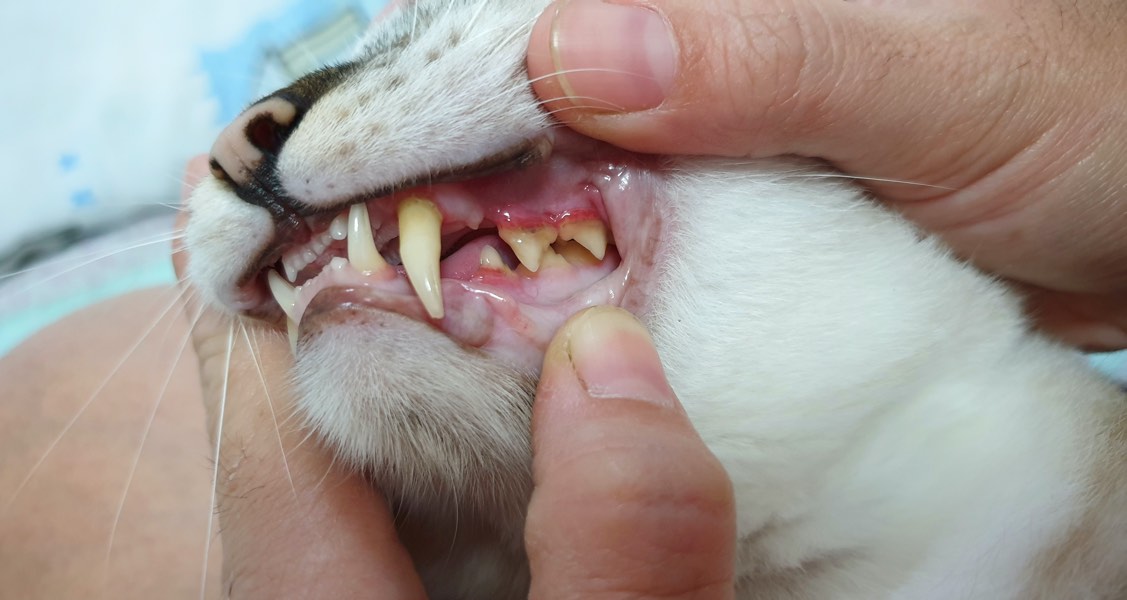A New Weapon Against Oral Cancer in Cats
By: Ian Nicholson | Apr 22, 2022

Cats captivate us with their charm, playfulness, and curiosity. They have lived with us as pest hunters, household deities, and furry BFFs for millennia. Life-threatening illnesses can be devastating for both cats and their human guardians. Oral cancer in cats can be deadly, but a new breakthrough treatment may improve health outcomes. Nanobody photodynamic therapy could treat inoperable tumors and save more cats’ lives.
Why Are Feline Oral Cancers So Deadly?
Feline oral squamous cell carcinoma develops in the gums, tongues, tonsils, and soft palates. This locally invasive cancer can spread into surrounding bone tissues. Current treatment methods include chemotherapy, radiation, and surgery. Most cats only survive two to four months after diagnosis and treatment.
Squamous cell carcinomas are treatable with early detection. So, why are survival rates so low? Blame cat evolution. Cats are ambush predators, hunting smaller animals like rodents and birds. Yet their smaller size makes them easy prey for species higher in the food chain. Predators tend to target weaker animals, so cats in the wild learned to conceal pain and injuries.
This evolutionary adaptation improves survival rates, but it has a downside: Cats hide their pain until they can’t. Large oral tumors become painful, which prompts them to stop eating. Meanwhile, they show other symptoms like halitosis and swelling near the jaw. By this time, as NCSU Veterinary Hospital explains, oral carcinomas may be too large for successful treatment.
What Is Nanobody Targeted Photodynamic Therapy?
With incurable oral cancer in cats, there’s currently only one option: palliative care. In these cases, goals include making the animal comfortable and reducing pain. Yet nanobody targeted photodynamic therapy could change that. NB-PDT combines a light-sensitive chemical with nanobodies, antibody fragments that target cancerous cells. Exposure to light triggers a chemical reaction that destroys these cells.
NB-PDT has proven effective in regressing tumors with certain treatment-resistant breast cancers. Researchers at Utrecht University are examining its potential in treating feline oral cancer. In laboratory tests, NB-PDT destroyed cancerous cells in tissue samples taken from cats. Throughout 2022, clinical trials are testing its effectiveness in cats with oral cancer.
Led by Dr. Sabrina Oliveira, this NB-PDT research is part of Utrecht’s KILLCANCER project. The European Research Council and the Morris Animal Foundation are funding these efforts.
Why Does NB-PDT Work?
NB-PDT is a newer form of photodynamic therapy. This technique uses a chemical reaction activated by light. It involves the topical application or intravenous delivery of a light-sensitive chemical. Patients are then exposed to light, which triggers the destruction of cancerous cells.
So, how does this process kill cancer cells? When the light-sensitive chemical reacts with oxygen, it produces reactive oxygen species. These unstable oxygen-containing molecules interact with organic compounds inside cancerous cells. As these unstable molecules kill cancer tissues, they regress tumors.
While effective at treating some cancers, traditional photodynamic therapy has some limitations. For instance, the patient must avoid sunlight for several weeks. NB-PDT is more sophisticated because of its precision targeting. Its chemical-nanobody combination only destroys cancer cells, not healthy tissue.
How Could NB-PDT Improve Treatment Outcomes?
If proven successful, NB-PDT may become widely available in veterinary practices. While each case is unique, NB-PDT could treat inoperable oral cancer in cats. Overall survival rates may improve as cats experience reduced pain and regain functionality. With NB-PDT, cats could also avoid the unpleasant side effects of radiation and chemotherapy.
Pet parents seek ways to help their companions enjoy long and healthy lives. NB-PDT is one example of human medical innovations crossing over into veterinary medicine. Regular check-ups and healthy lifestyles are key. However, these breakthroughs can supply more treatment options and improve our pets’ overall health.
Sources:
https://pubmed.ncbi.nlm.nih.gov/32330574/
https://www.morrisanimalfoundation.org/article/new-treatment-squamous-cell-carcinoma-cats
https://cellbiology.science.uu.nl/research-groups/sabrina-oliveira-molecular-targeted-therapies/


Disclaimer: healthcareforpets.com and its team of veterinarians and clinicians do not endorse any products, services, or recommended advice. All advice presented by our veterinarians, clinicians, tools, resources, etc is not meant to replace a regular physical exam and consultation with your primary veterinarian or other clinicians. We always encourage you to seek medical advice from your regular veterinarian.

